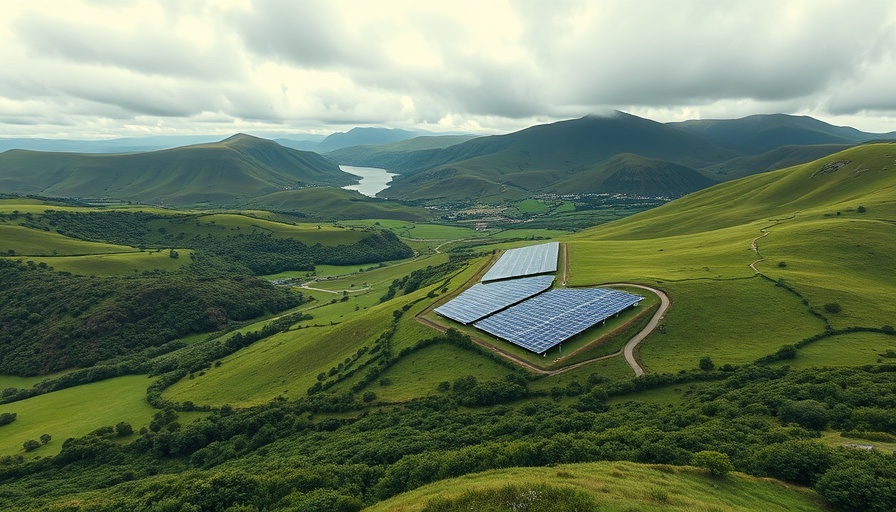
Community Solar Energy Grows in Scotland
A significant milestone in renewable energy is taking shape on the Isle of Arran, Scotland, with the proposed Glenkiln solar farm. This 6-megawatt project, aimed at being Scotland's largest community-owned solar farm, recently received planning approval, paving the way for construction financing and community engagement. Funded at £5 million, it's anticipated to provide enough energy to power approximately 1,250 households each year by 2027.
Innovative Design and Environmental Integration
Spanning 20 acres, the Glenkiln solar farm will utilize around 10,000 solar panels. Notably, the design will include practices such as allowing sheep to graze around the solar installations, fostering biodiversity. This innovative integration seeks to harmonize energy production with local agricultural practices, showcasing the dual benefits of renewable energy and sustenance for the land.
The Road to Energy Independence
Arran Community Renewables (ACR) anticipates that the project will aid Scotland in its ambitious goal of achieving net-zero emissions by 2045. By reducing dependence on fossil fuels and enhancing energy resiliency on the Isle, projects like Glenkiln signify a pivotal shift toward sustainable community-led initiatives. Chris Grainger, ACR's director, expressed enthusiasm for this next phase, aiming to expand local membership and secure construction funding.
Overcoming Challenges in Renewable Development
While the progress towards renewable energy marks a significant achievement, challenges remain. Public apprehensions about the reliability of solar power in Scotland's notoriously rainy climate and concerns over farmland usage continue to linger. Yet, proponents argue that community-driven solar projects can deliver dependable, emissions-free energy, contributing to local economies while ensuring environmental sustainability.
A Call to Action for Sustainable Living
As the Glenkiln solar farm project takes flight, it serves as an inspiring example of how communities can unify for a sustainable future. For California homeowners, who are often at the forefront of adopting eco-friendly innovations, observing such developments can spark interest and motivation to explore similar initiatives in their locales. Consider how renewable energy can play a role not just in Scotland but within your own home.
 Add Row
Add Row  Add
Add 




Write A Comment